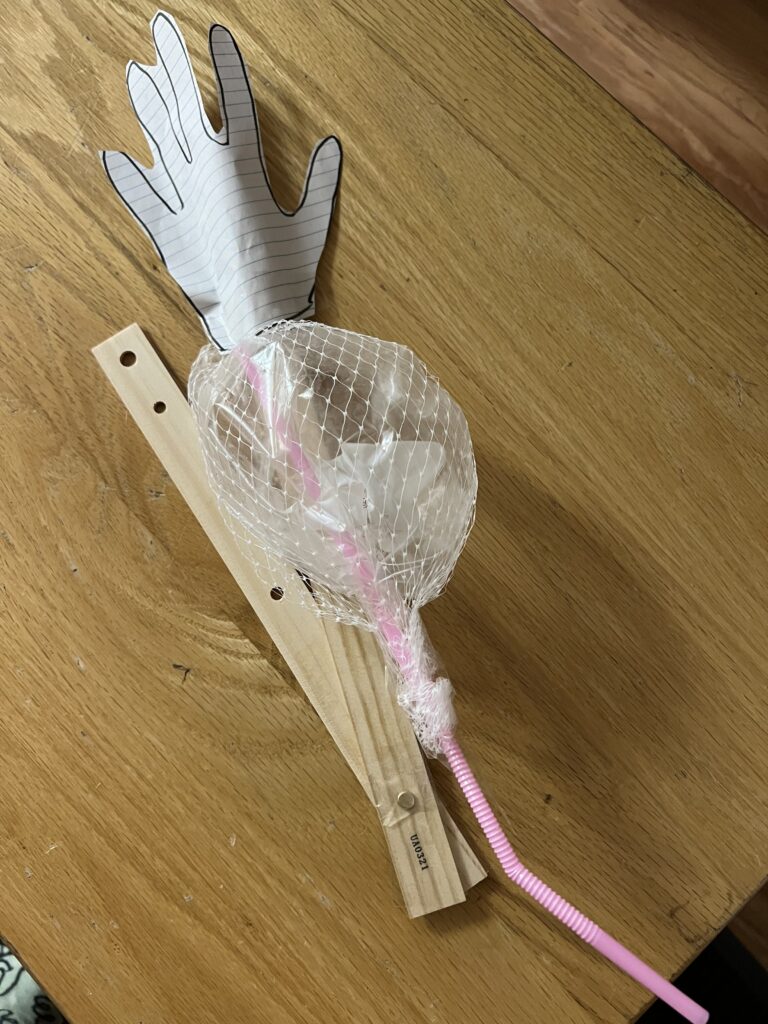The purpose of this is to help familiarize the connection between our muscles and the skeletal system. For my STEAM project what I have done is I have made a 3D model on the way that the arm muscles connect to the skeletal system in the arms and how they help each other to move in the body. First, we have to start off with the anatomy of the upper arm. There are multiple components of the arm that help move the entire arm itself. This would include the biceps brachii, coracobrachialis, brachialis, and the triceps muscle. With these muscles, we also have the nerves that pass through the arm as well. Those nerves are the musculocutaneous nerve, median nerve, ulnar nerve, and radial nerve. The bones included would be the radius, ulna, and humerus. My art piece is a 3D model of how a muscle contracts and is able to pull the bone so that the arm is able to complete a flexion motion. The smaller bones that can also be affected are the metacarpal bones. The way this works is that the tricep muscles work to either bend or extend the arm muscle. When the bicep muscles do contract they get smaller and pull at the tendons associated with the bones to help pull the arm up. With this, the brachialis and the biceps muscles work together to be able to bend the arm at the elbow as well. We call this a flexion motion. As I mentioned before, the smaller bones in the fingers known as the metacarpals can be pulled to help bend the fingers and grasp various objects. The way that my model helps show this is that the bag inside of the net would represent the muscle or the brachialis muscles. The net itself would be a representation of all the tendons and ligaments that help connect to the bones that help work to bring the arm up when told to do so. When you blow into the straw, the bag begins to blow up, bringing the ruler which would represent the radius and ulna up with it. What happens is the different muscles, tendons, and ligaments work together to bring the arm into a flexion motion. This ties into our objective of how muscles interact with the skeletal system. When These muscles work together they are able to help out different tendons and ligaments that bring up the bones. It is a very small model but it helps show a physical reaction to how the arm is able to move the way it does. It provides a visual representation and example on how your bicep muscles and tendons work together to bring this arm up. What these muscles are also able to do is connect with the tendons, ligaments, and flexors in the arms and hands so that your arm is also able to move in the pronation and supination direction as well.
References:
- Mitchell, B., & Whited, L. (2022, June). Anatomy, shoulder and upper limb, forearm muscles – statpearls – NCBI …National Library of Medicine. Retrieved November 9, 2022, from https://www.ncbi.nlm.nih.gov/books/NBK536975/
- Agustyn, A. (2021, July 25). ARM. Encyclopædia Britannica. Retrieved November 9, 2022, from https://www.britannica.com/science/arm
- Alshammari SM, Bordoni B. Anatomy, Shoulder and Upper Limb, Arm Muscles. [Updated 2022 Jul 25]. In: StatPearls [Internet]. Treasure Island (FL): StatPearls
- Publishing; 2022 Jan-. Available from: https://www.ncbi.nlm.nih.gov/books/NBK554420/


